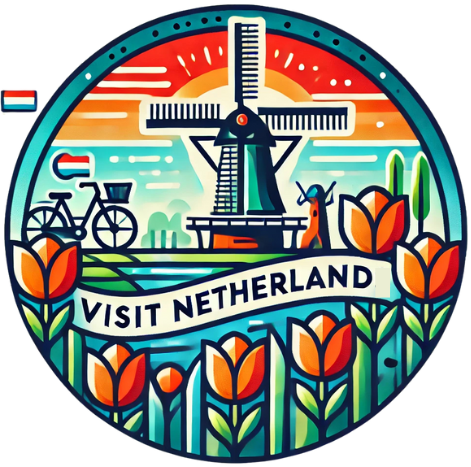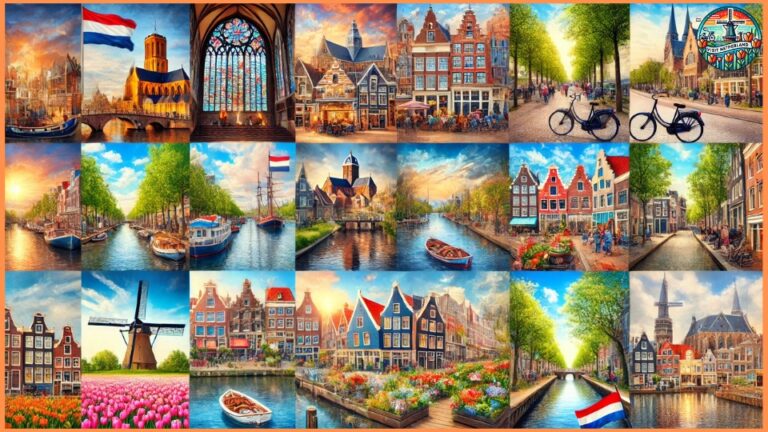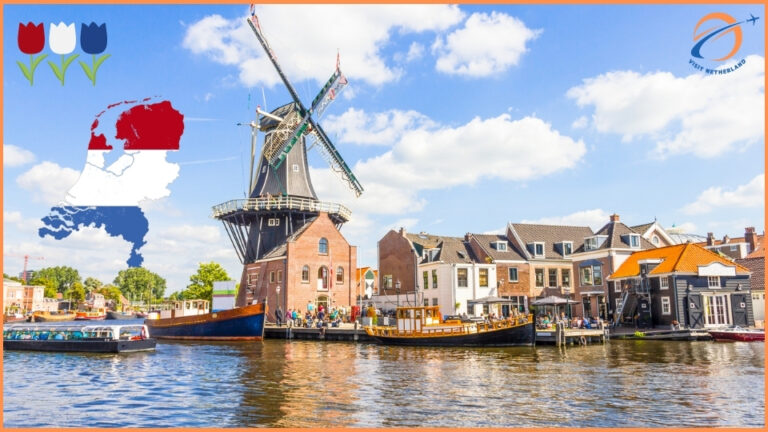Budget Travel in Netherlands: Your Wallet Will Thank You Later
Look, I’m not gonna lie – the Netherlands might seem expensive at first glance, but trust me on this one. You can absolutely have an amazing time there without selling a kidney. I’ve been there, done that, and come back with money still in my pocket (and some incredible stories). Let me spill all my secrets for experiencing Dutch culture, those dreamy tulip fields, and world-class museums without going broke.
1. Why You Should Totally Visit the Netherlands on a Budget
You’ll Get More Culture Than You Can Handle (Without Going Broke)
Here’s the thing about the Netherlands – it’s basically like Europe’s greatest hits album, but in a tiny package. You’ve got incredible art museums, gorgeous old buildings, and experiences that’ll make your Instagram followers super jealous. And the best part? Tons of places offer student discounts (even if you graduated ages ago, just ask!), free days, or cheap evening rates.
Want to know a secret? Some of the best cultural experiences are totally free. I’m talking about amazing street art tours, walking tours where you just tip what you think it’s worth, and festivals that happen all the time. Plus, the Dutch are obsessed with being outdoors, so you’ll find yourself having picnics by canals, hanging out at beaches, and catching free concerts in parks – all while soaking up that local vibe.
Budget Travel Here Feels Like You’re Living Fancy
Okay, this might sound weird, but budget traveling in the Netherlands doesn’t feel cheap at all. The whole country is just… well-organized? Clean? Safe? Even the hostels are nicer than some hotels I’ve stayed at in other places. Free Wi-Fi everywhere, public spaces that don’t make you want to run away, and honestly, even when you’re not spending much, everything feels pretty classy.
The Dutch have this whole lifestyle thing figured out – they bike everywhere, hang out at cute canal-side cafés, and love their outdoor markets. You can totally live like a local without spending like a tourist. Sometimes the simple stuff (like an afternoon in Vondelpark or a cheap canal cruise) ends up being way more fun than those overpriced tourist traps.
2. When to Go So You Don’t Break the Bank
Skip the Crowds, Save the Cash
If you can handle a bit of cold and rain, visit between November and March. I know, I know – it sounds miserable, but hear me out. You’ll save like 30-50% on hotels, and you won’t be fighting crowds everywhere. Plus, there’s something cozy about ducking into warm museums and cafés when it’s chilly outside.
Spring and fall are the sweet spot, though. You get decent weather without the crazy summer prices. April-May and September-October are perfect – not too hot, not too cold, and your wallet won’t hate you.
Summer’s gorgeous but expensive as hell. Everyone and their mom wants to visit then, so if you must go, book way ahead and maybe stay outside the main cities to save some cash.
Weather and Events – Plan Smart
Spring is tulip season, which is absolutely magical, but also when prices go nuts. King’s Day (April 27th) is insane fun – the whole country turns orange and parties – but good luck finding cheap accommodation. Book early or be prepared to pay.
Winter can actually be pretty cool with Christmas markets and ice skating. Just pack a good rain jacket because Dutch weather is… unpredictable. Some outdoor stuff closes, so check ahead.
Pro tip: Avoid Dutch school holidays unless you love crowds and high prices. But hey, there are often free local events during these times that can make up for it.
3. Where to Sleep Without Spending a Fortune
Hostels That Don’t Suck (Promise!)
Dutch hostels are actually pretty awesome. We’re talking €20-35 for a dorm bed in the big cities, and many throw in breakfast and have common areas where you’ll meet cool people. Don’t stay right in the city center – go a bit outside and you’ll save money while still having easy access to everything.
ClinkNOORD in Amsterdam is in this converted laboratory (weird but cool), and Hostelle in Rotterdam is female-only if that’s your thing. Book directly with the hostel to avoid those annoying booking fees.
If you want privacy but not hotel prices, try Ibis Budget or B&B Hotels. You’ll get your own room with a bathroom for like €60-90, often with breakfast included. Perfect for couples or if you just need to escape snoring roommates.
Free Stays (Yes, Really!)
Couchsurfing is still a thing in the Netherlands, and Dutch people are generally pretty awesome hosts. They’ll often give you insider tips that save you money and show you stuff tourists never see. Just make your profile good and ask nicely – way ahead of time.
House sitting is huge there, especially around Amsterdam. Basically, you watch someone’s cat or water their plants in exchange for free accommodation. TrustedHousesitters is your friend here. It’s perfect for longer stays.
Home swapping is another option – you trade houses with a Dutch family. Obviously, this only works if you’ve got something decent to offer back, but it’s a cool way to live like a local.
Get Creative with Camping
Yeah, you can camp near major cities for like €15-25 a night. Camping Zeeburg in Amsterdam is right in the city, and you can bike everywhere from there. It’s actually pretty fun if you’re into that sort of thing.
Want something more interesting? Try glamping – sleep in shipping containers, treehouses, or old Dutch barns for €40-70. Often includes breakfast and bikes, which is a sweet deal.
And here’s a fun one: houseboats! You can stay on actual floating homes through Airbnb. It’s such a Dutch experience and often cheaper than hotels in prime spots.
4. Getting Around Without Going Broke
Master the Public Transport Game
Get an OV-chipkaart – it’s this plastic card that works on everything (trains, buses, trams, you name it). Load it up with money instead of buying individual tickets, and you’ll save like 40%. Trust me on this one.
Travel off-peak and you’ll save even more. That means weekdays between 9 AM and 4 PM, after 6:30 PM, and weekends. Plan your train trips during these times and watch your savings add up.
If you’re traveling in a group of 4 or more, get a Groepsretour ticket for same-day returns. It’s ridiculously cheap compared to individual tickets.
Bikes – Do It the Dutch Way
Renting a bike is often cheaper than public transport, and way more fun. Standard bikes are like €10-15 per day, and many places you stay will hook you up with free or cheap rentals.
For longer stays, just buy a used bike. Check Facebook Marketplace or ask around – you can usually sell it back before you leave. I’ve seen people basically bike for free this way.
E-bikes cost more, but they’re amazing for longer trips. You can cruise to places like Keukenhof without arriving as a sweaty mess.
Transport Passes – Do the Math
The Holland Pass gives you free stuff at attractions, plus unlimited transport in Amsterdam and The Hague. But honestly, calculate if you’ll actually use it enough to make it worth it.
NS Day Passes are €50-65 and give you unlimited train travel across the whole country. Perfect for those “let’s see three cities in one day” adventures.
Amsterdam’s GVB day pass is only €8.50 and covers all public transport in the city. If you’re planning to hop around different neighborhoods, it’s totally worth it.
5. Eating Well on the Cheap
Eat Like the Locals Do
Dutch lunch is all about simple sandwiches (broodjes) from local bakeries. We’re talking €3-6 for something filling. Try broodje kaas (cheese), broodje kroket (this weird but delicious fried thing), or if you’re feeling brave, broodje haring (raw herring – it’s actually good, I swear).
Pancake houses are everywhere, and the pancakes are huge. Like, seriously huge. €8-15 gets you a meal that’ll keep you full for hours. They do both sweet and savory toppings, so you can have dessert for lunch and not feel guilty about it.
Indonesian food is massive there (colonial history and all that). The portions are generous, prices are reasonable, and rijsttafel (rice table) is perfect for sharing. Skip the touristy places and find where locals eat.
Where to Find the Good Cheap Stuff
Food markets are your best friend. Albert Cuyp in Amsterdam, Markthal in Rotterdam (it’s in this crazy building that looks like a giant horseshoe), and markets in smaller cities have fresh food, international options, and local specialties without the tourist markup.
Hang around university areas – students know where the good, cheap food is. You’ll find cafeterias, ethnic restaurants, and places with portions that’ll make you question if you can finish them.
Brown cafés (traditional Dutch pubs) do happy hour right. They’ll give you substantial snacks with your drinks that can basically be dinner. Plus, you’ll be drinking with locals instead of tourists.
Cook Your Own Food (Sometimes)
Albert Heijn, Jumbo, and PLUS are the main supermarkets. Their store brands are actually good quality and way cheaper than name brands. Look for the weekly specials – they’re always running deals.
Lidl and Aldi are your budget heroes. Their weekly specials are insane – fresh produce, dairy, random international foods, all at prices that’ll make you wonder how they make money.
Turkish and Middle Eastern grocery stores (especially in Amsterdam, Rotterdam, and The Hague) have amazing fresh produce and spices for way less than the big chains. Plus, you’ll discover ingredients you never knew existed.
Hit up local markets – they happen weekly in most towns. Prices are often negotiable, especially if you arrive near closing time when vendors are eager to go home.
Oh, and download Too Good To Go – it’s this app where restaurants and bakeries sell their leftover food for half price at the end of the day. You’re saving money AND helping reduce food waste. Win-win!







